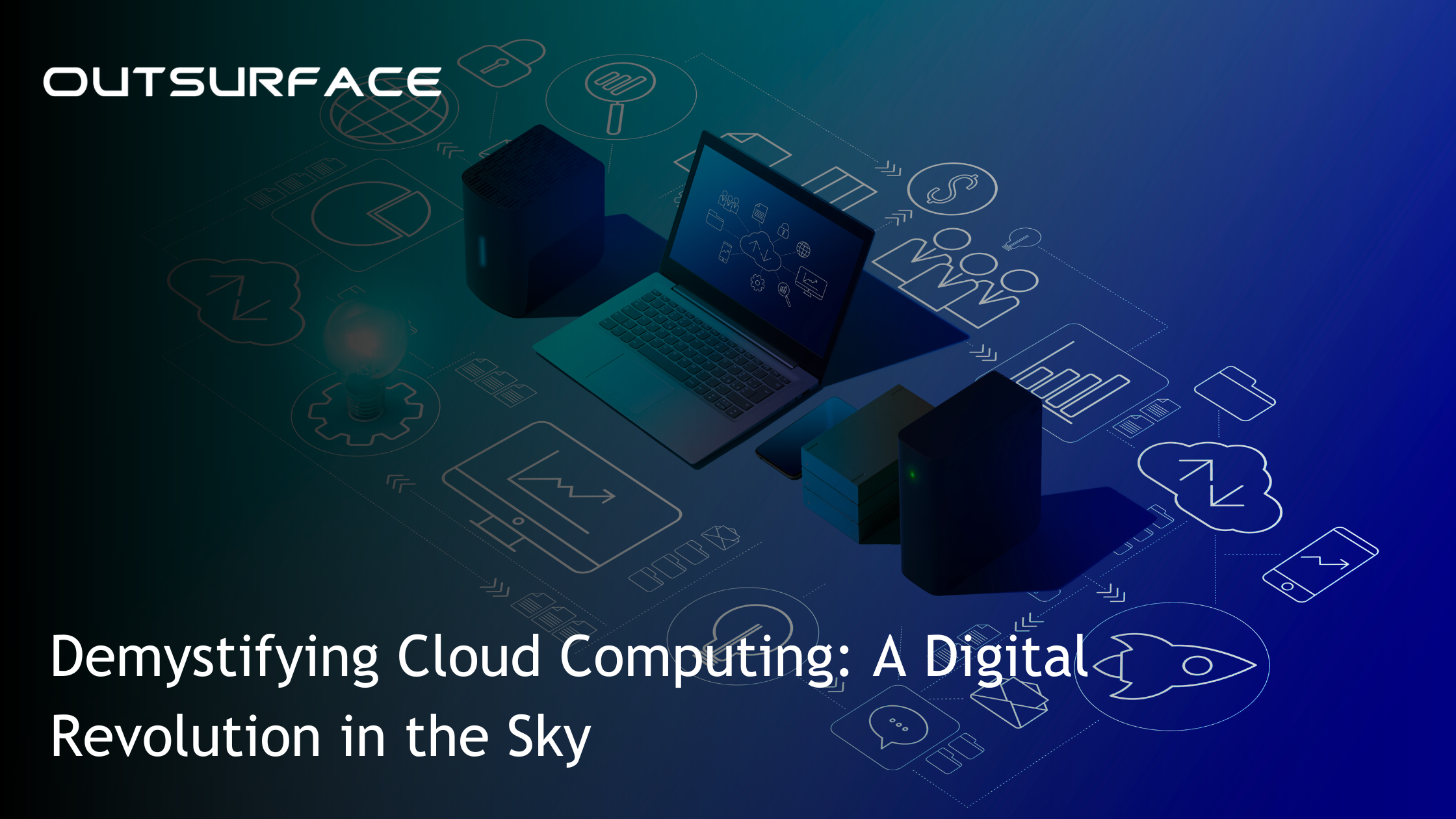In today’s fast-paced digital landscape, the term “cloud computing” is ubiquitous, and for a good reason. It has fundamentally transformed the way we store, process, and access data, revolutionizing industries and changing the way we work and play. In this blog, we’ll take you on a journey to demystify cloud computing, explaining what it is, how it works, and why it’s such a game-changer.
Chapter 1: The Cloud Unveiled
Let’s start at the beginning by unraveling the concept of the cloud. When we talk about the cloud, we’re not referring to a nebulous entity in the sky. Instead, the cloud is a network of servers located in data centers worldwide. These servers are connected through the internet, and they serve as the backbone of cloud computing. In essence, the cloud is a vast infrastructure that allows you to store and access data and run applications without the need for physical hardware on your device.
Chapter 2: How Does It Work?
Now that we’ve clarified what the cloud is, let’s dive into how it works. At the heart of cloud computing is virtualization, a technology that enables multiple virtual machines to run on a single physical server. This efficient use of resources allows cloud providers to offer services to a wide range of customers simultaneously.
There are several service models in cloud computing:
- Infrastructure as a Service (IaaS): This provides virtualized computing resources over the internet. You can rent virtual machines, storage, and networking components to build and manage your applications.
- Platform as a Service (PaaS): PaaS offers a platform that includes everything you need to develop, run, and manage applications. Developers can focus on writing code without worrying about the underlying infrastructure.
- Software as a Service (SaaS): SaaS delivers software applications over the internet on a subscription basis. Users can access these applications from any device with an internet connection.
Chapter 3: The Cloud’s Many Faces
Cloud computing isn’t a one-size-fits-all solution. There are different types of clouds to consider:
- Public Cloud: Services are owned and operated by a third-party cloud service provider and are available to the general public. Examples include Amazon Web Services (AWS), Microsoft Azure, and Google Cloud Platform (GCP).
- Private Cloud: A private cloud is dedicated to a single organization. It provides greater control and customization but may require more infrastructure management.
- Hybrid Cloud: A hybrid cloud combines elements of both public and private clouds. It allows data and applications to be shared between them, providing flexibility and scalability.
Chapter 4: Benefits Galore
So, why are businesses and individuals flocking to the cloud? The answer lies in the numerous advantages it offers:
- Cost Savings: Cloud computing eliminates the need for costly on-premises hardware and maintenance. You pay only for the resources you use.
- Scalability: Cloud resources can be quickly scaled up or down to meet demand, ensuring optimal performance and cost-efficiency.
- Flexibility: Cloud services offer a wide range of tools and platforms, accommodating various workloads and applications.
- Accessibility: With an internet connection, you can access cloud services and data from anywhere, enabling remote work and collaboration.
Chapter 5: Cloud Security Matters
One of the most common concerns about cloud computing is security. How safe is your data in the cloud? Cloud providers invest heavily in security measures, including encryption, firewalls, and access controls. However, it’s crucial for users to follow best practices and implement additional security measures to protect their data.
Chapter 6: Real-World Applications
Cloud computing has permeated almost every aspect of our digital lives, often without us realizing it. Here are some real-world applications:
- Streaming Services: Platforms like Netflix and Spotify rely on cloud infrastructure to deliver content to users.
- Social Media: Facebook, Twitter, and Instagram use the cloud to handle vast amounts of user-generated content and interactions.
- Data Analytics: Big data and analytics tools leverage the cloud’s processing power to gain insights and make data-driven decisions.
- AI and Machine Learning: Cloud platforms provide the computational resources needed for training and deploying AI and machine learning models.
Chapter 7: Future Trends and Innovations
As we peer into the future, we can anticipate even more exciting developments in cloud computing. These may include advancements in edge computing, quantum computing, and increased integration with AI and IoT technologies. The cloud will continue to evolve, offering new possibilities and opportunities for businesses and individuals alike.
By the end of this journey, you’ll have a clear understanding of cloud computing and its significance in today’s digital era. Whether you’re a tech enthusiast, a business owner, or simply curious about the technology shaping our world, this blog equips you with the knowledge you need to navigate the cloud with confidence. So, fasten your seatbelts as we embark on a cloud adventure like no other! The sky’s the limit when it comes to the possibilities of cloud computing.

